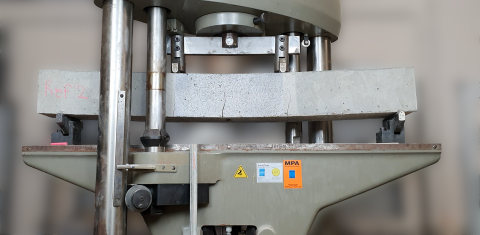Structural Concrete, Structural Engineering
Prof. Dr. Jörg Jungwirth (Phd)
The research field of structural concrete and structural engineering is supervised by Prof. Dr. Jörg Jungwirth. The research area is supported by specialist colleagues from the Laboratory of structural concrete and structural engineering.
The activities of the research area include the design, structural analysis and execution planning as well as the strengthening of reinforced and post-tensioned concrete structures including masonry. This applies to both building construction and engineering structures for transport infrastructure.
The focus of research area is not only purely on design of masonry and reinforced concrete structures. The social responsibility of a design engineer is much broader. In addition to design requirements and load-bearing capacity, the issue of sustainability in particular is a central aspect. The durability, economic efficiency and flexible usability of structures must be ensured in order to meet future requirements and challenges. Digital planning and construction methods, including BIM and 3D concrete printing, can optimize design process and construction time and make them more cost-efficient. Thus, with the limited resources, time and building materials, can be achieved a maximum benefit for society. Based on this holistic approach, the research area of structural concrete and engineering structures deals with the main topics below:
- design and structural engineering of reinforced concrete structures including masonry
- digital planning processes with the BIM method
- numerical modelling of the structural behaviour of concrete structures e.g. with the FEM method
- strengthening of structures: Reinforcement for bending, shear and normal force with top layers in concrete (e.g. as shotcrete) and lamellas (steel, carbon, etc.)
- use of ultra-high performance concrete (UHPC) for strengthening
- design and dimensioning of structures made of ultra-high performance concrete (UHPC), especially bridge structures
- Modular construction and digital construction methods (e.g. 3D concrete printing)
- sustainability assessment and sustainable design of transport infrastructure (bridges, roadways, tunnels)
- structures of transport infrastructure (bridges, tunnels in open construction, metro stations)
- traffic routes in concrete construction for railway, roads, subways; e.g. slab tracks
- Loads and impact from natural hazards on structures and appropriate design: earthquakes, avalanches, etc.
